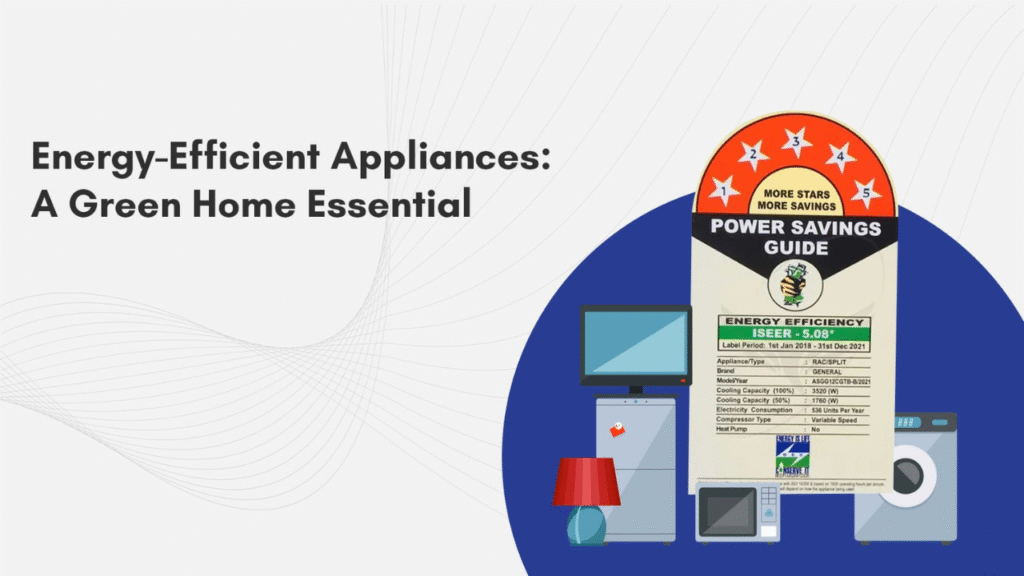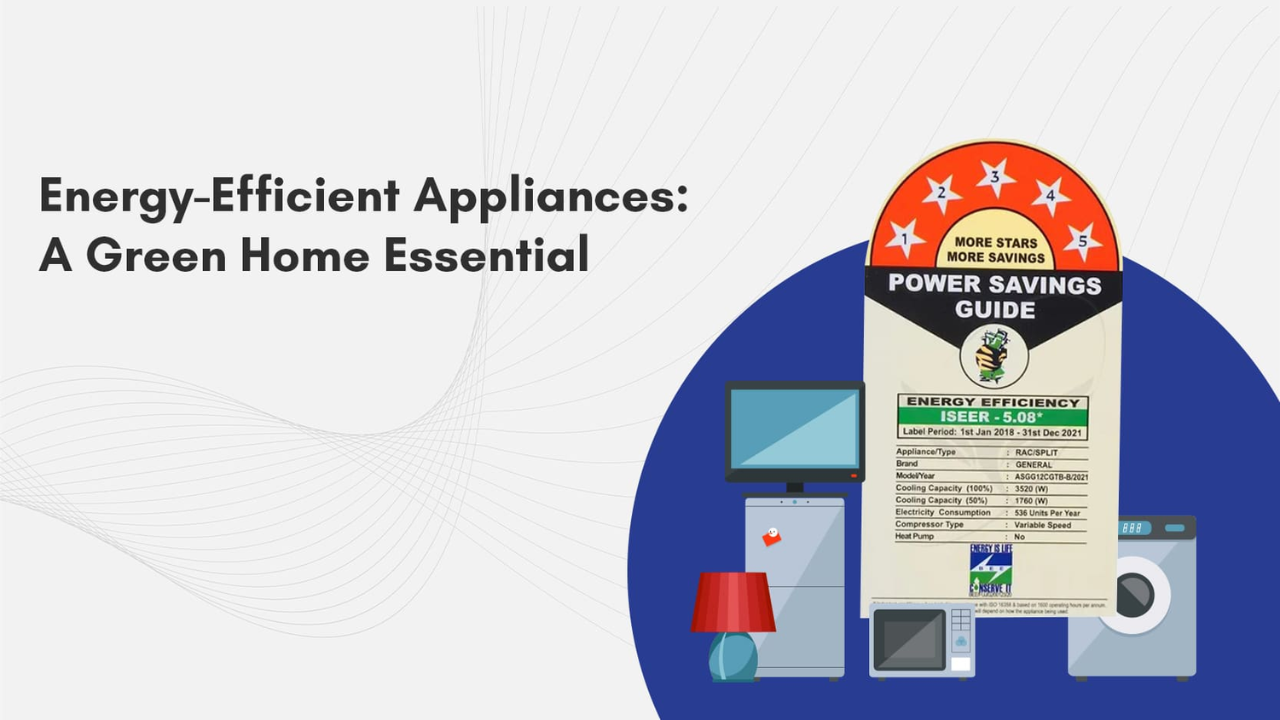
Energy-efficient appliances have become essential for homeowners aiming to reduce energy consumption, save money, and minimize environmental impact. These appliances are designed to use less electricity or water while maintaining optimal performance, which translates into lower utility bills and reduced greenhouse gas emissions. This guide explores the benefits, types, technologies, and practical considerations of energy-efficient appliances for a sustainable home.
Why Choose Energy-Efficient Appliances?
- Cost Savings: Reduced energy consumption lowers electricity and water bills.
- Environmental Benefits: Less energy usage decreases carbon emissions and dependence on fossil fuels.
- Enhanced Performance: Modern energy-efficient appliances often outperform older, less efficient models.
- Long-Term Value: Though initial costs may be higher, lower operating expenses make them more economical over time.
Key Consideration: Look for ENERGY STAR or equivalent certifications to ensure verified efficiency standards.
Types of Energy-Efficient Appliances
1. Refrigerators and Freezers
- Use advanced compressors, improved insulation, and energy-efficient motors.
- Modern models consume 20–50% less energy than older units.
2. Washing Machines and Dryers
- Front-loading washing machines use less water and energy than top-loading versions.
- Heat-pump dryers use significantly less electricity compared to conventional models.
3. Dishwashers
- Efficient dishwashers reduce water and energy usage through optimized cycles and sensors.
- Energy-saving settings and delayed start options minimize electricity costs.
4. Heating and Cooling Systems
- High-efficiency air conditioners and heat pumps consume less energy while maintaining comfort.
- Smart thermostats optimize energy use by adjusting temperatures based on occupancy patterns.
5. Kitchen Appliances
- Induction cooktops heat faster and waste less energy than traditional electric or gas stoves.
- Energy-efficient ovens and microwaves use advanced insulation and sensors for optimal cooking efficiency.
6. Water Heaters
- Tankless or on-demand water heaters provide hot water only when needed, reducing standby energy loss.
- Solar water heaters leverage renewable energy for further savings.
Benefits of Using Energy-Efficient Appliances
- Lower Energy Bills
- Significant savings are realized over the appliance’s lifespan.
- Reduced Carbon Footprint
- Decreased energy demand contributes to lower greenhouse gas emissions.
- Enhanced Home Comfort
- Modern appliances often include features for precise temperature control, faster cycles, and quieter operation.
- Durability and Reliability
- High-quality energy-efficient appliances tend to have longer lifespans and fewer maintenance issues.
Cost Considerations
| Appliance Type | Average Cost (USD) | Energy Savings (%) | Notes |
|---|---|---|---|
| Refrigerator/Freezer | $600–$2,000 | 20–50% | ENERGY STAR rated models save electricity |
| Washing Machine | $400–$1,200 | 30–50% | Front-load models use less water and energy |
| Dryer | $500–$1,500 | 20–60% | Heat pump dryers are most efficient |
| Dishwasher | $400–$1,200 | 20–40% | Sensor-based cycles optimize water and energy |
| Air Conditioner/Heat Pump | $2,000–$8,000 | 20–60% | Smart thermostats enhance efficiency |
| Water Heater | $500–$3,500 | 30–70% | Tankless and solar models reduce standby loss |
Tip: Investing in high-efficiency appliances is cost-effective when considering long-term energy savings and environmental impact.
Tips for Maximizing Efficiency
- Proper Usage: Follow manufacturer guidelines for load sizes, cycles, and settings.
- Regular Maintenance: Clean filters, coils, and vents to maintain optimal performance.
- Smart Features: Use timers, sensors, and programmable options to reduce energy waste.
- Upgrade Old Appliances: Replacing outdated appliances often yields immediate savings.
- Integrate with Renewable Energy: Pair appliances with home solar or battery systems for maximum environmental benefit.
Environmental Impact
By using energy-efficient appliances, homeowners can significantly reduce electricity consumption, lowering their carbon footprint. For example, replacing a 15-year-old refrigerator with a modern ENERGY STAR model can save approximately 400–600 kWh annually, equivalent to preventing over 300 pounds of CO₂ emissions each year.
Overview Table
| Appliance Type | Key Features | Primary Benefit |
|---|---|---|
| Refrigerator/Freezer | Efficient compressors, insulation | Reduced energy use, lower bills |
| Washing Machine | Front-load, optimized water cycles | Water and electricity savings |
| Dryer | Heat pump technology | Reduces energy consumption |
| Dishwasher | Sensor-based cycles | Saves water and electricity |
| Heating/Cooling Systems | High-efficiency units, smart thermostats | Comfort and reduced energy demand |
| Water Heater | Tankless or solar-powered | Minimizes standby energy loss |
Conclusion
Energy-efficient appliances are a win-win for homeowners and the environment. They offer cost savings, reduced carbon emissions, and enhanced convenience. Upgrading to high-efficiency models, maintaining appliances properly, and leveraging smart energy technologies allow homeowners to maximize both economic and environmental benefits. Integrating these appliances into a holistic home energy strategy ensures a sustainable and cost-effective lifestyle.
3 Quick FAQs
- Do energy-efficient appliances cost more upfront?
Yes, but the long-term energy savings and reduced utility bills make them cost-effective. - How much can I save by switching to efficient appliances?
Depending on usage and appliance type, homeowners can save 20–60% on energy consumption. - Are all modern appliances energy-efficient?
No, always check for ENERGY STAR or equivalent certifications to ensure verified efficiency.

